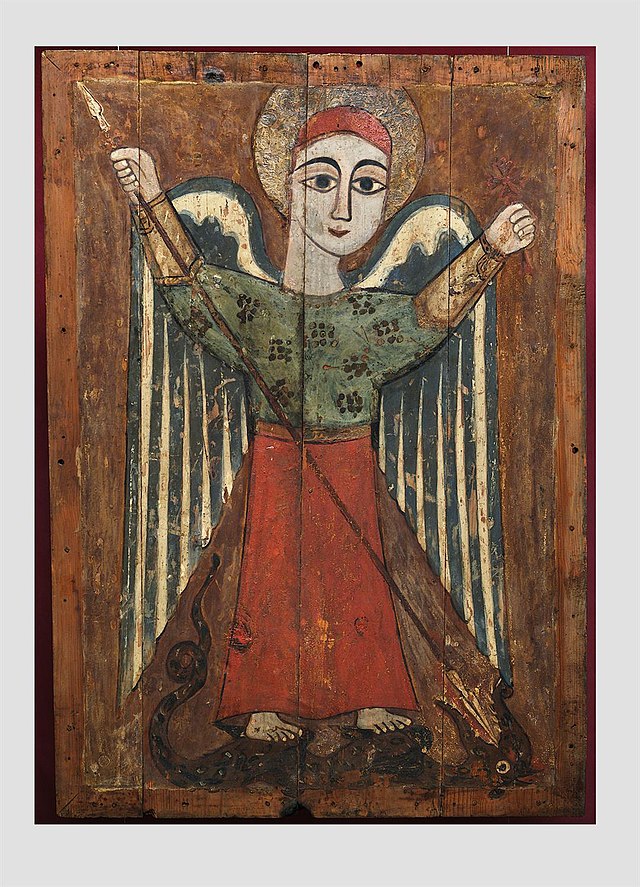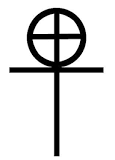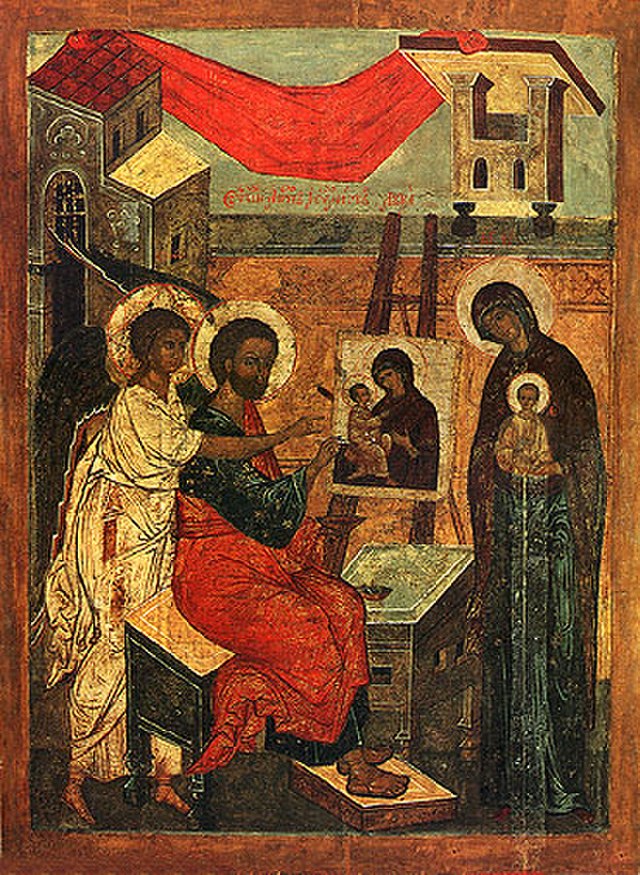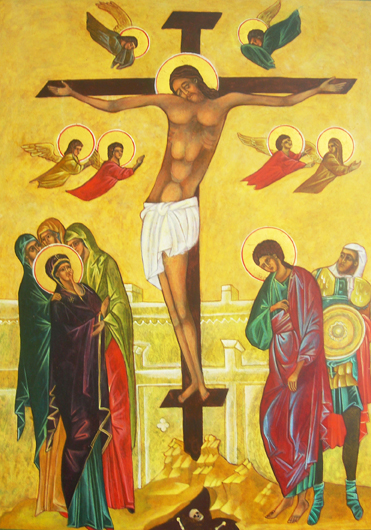
Recently, while teaching an online icon writing class on the Transfiguration, the subject of Coptic icons came up. Each of us spoke admiringly about them, the color schemes, the simplified human forms, and the fact that they are attractive in many ways. But we soon realized that we didn’t really know much about them.

So, here I have done some research that I now share, and I hope that many of you with more knowledge will share your thoughts and Coptic icon images on the FB (American Association of Iconographers FB group) page too.
Here’s what I have been able to discover:
In 30 BC, Egypt became a Roman province, and over the next several years, immigrants from Greece, Rome, Libya, and Syria brought their artmaking traditions and methods to apply to the art of this time. According to tradition, the Coptic Church was founded by Mark the Evangelist c. AD 42, and regards itself as the subject of many prophecies in the Old Testament. The first Christians in Egypt were common people who spoke Egyptian Coptic.

The Church of Alexandria was the first Church of Africa, and through it, the influence of Coptic art spread to Sudan and Ethiopia. Some forms of the Coptic cross are known as the Ethiopian cross and many Churches in Ethiopia show the influence of the Coptic art.
The early Coptic icons of the third century Egypt, used encaustic paints and later, influenced by the Byzantine tradition, egg tempera. The Coptic style favors enlarged eyes, frontal figures, and an under emphasis of natural proportions in figures. The figures of saints display eyes and ears larger in proportion to the rest of the face and a smaller mouth, as well as enlarged heads, signifying a spiritual relationship with God and devotion to prayer. Martyrs’ faces were peaceful. Early Coptic icons were influenced in style of painting by the Egyptian Fayum memorial portraits used on Egyptian sarcophagi.

These Fayum portraits from the Egyptian Sarcophagi were painted in the Greco-Roman style of painting and became the basis of both Coptic and Byzantine iconography. Beautiful portraits, they have simple, graceful forms, and employ a simple color palette, using what we now refer to as the Greek Palette- mixtures of red ochre, yellow ochre, white and black. Although the same painting style was used on each portrait, artists were able to achieve a great variety of resemblances to the persons being depicted.

In 641 Muslims conquered Egypt and made it a province of an Islamic Empire whose capital was Damascus. The religious history that followed is a complicated mixture of acceptance for Christians, and then later in the 9th century, relations were more difficult. The period from the 7th to 13 century was more promising, allowing for Christian Coptic art to flourish once again and to further develop the Coptic style. There was even something of a Renaissance of Coptic art in the 13th century with many Coptic illustrated manuscripts, much like the illuminated manuscripts of the western Church.
After this, for political reasons, there was a sharp decline in productivity of Coptic Art,until the 18th century when the West re-discovered the attraction of Coptic Icons.
In today’s world there are several Coptic Iconographers who are continuing to develop the Coptic style of iconography. I am including here links to Dr. Stephan Rene’s website from which a much more nuanced understanding of Coptic iconography can be found, and two other links that may be useful for a more complete perspective.
Again, please do add to the FB group page more information or images if you would like to share your experience with Coptic Icons with others. I hope this has inspired you to think about different styles of icon writing and how culture and politics can affect the art of their time.
Dr. Stephan Rene’s Website: https://copticiconography.com/2019/12/24/reflections-on-discipleship-and-coptic-iconography/
UK Coptic Icons. https://www.ukcopticicons.com
Until next month,
My very best wishes for God to continue to bless the work of your hands,
Always,
Christine Simoneau Hales

































